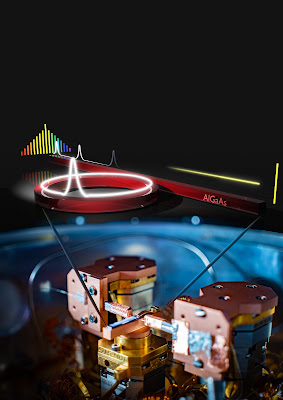Dr. George Carruthers, [right], and William Conway, a project manager at the Naval Research Institute, examine the gold-plated ultraviolet camera/spectrograph, the first Moon-based observatory Carruthers developed for the Apollo 16 mission. Apollo 16 astronauts placed the observatory on the moon in April 1972.
Topics: African Americans, Black History Month, Diversity in Science, Instrumentation, NASA
Dr. George Carruthers, a scientist at the Naval Research Laboratory, stands to the right of his invention, the gold-plated ultraviolet camera/spectrograph. The first Moon-based observatory, Carruthers developed it for the Apollo 16 mission. He stands beside his colleague William Conway. Working for the Naval Research Laboratory, Carruthers had three years earlier received a patent for a Far Ultraviolet Electrographic Camera, which obtained images of electromagnetic radiation in short wavelengths.
Apollo 16 astronauts placed the observatory on the Moon in April 1972, where it sits today on the Moon’s Descartes highland region, in the shadow of the lunar module Orion. Asked to explain highlights of the instrument’s findings for a general audience, Dr. Carruthers said “The most immediately obvious and spectacular results were really for the Earth observations because this was the first time that the Earth had been photographed from a distance in ultraviolet (UV) light so that you could see the full extent of the hydrogen atmosphere, the polar auroras and what we call the tropical airglow belt.”
Dr. Carruthers made the first detection of molecular hydrogen in space, in 1970, using a sounding rocket. He developed a rocket instrument that obtained a UV image of Comet Halley, and an instrument with two cameras, with different far-UV wavelength sensitivities, used on the STS-39 space shuttle mission in 1991. He also worked on UV imaging of Earth’s polar auroras and of the faint photochemical luminescence found in the upper atmosphere, with an instrument, Global Imaging Monitor of the Ionosphere (GIMI), on a Department of Defense satellite, the Advanced Research and Global Observation Satellite (ARGOS), launched in 1999. In 2012, he was awarded the National Medal of Technology and Innovation, the nation’s highest honor for technology achievement. Dr. Carruthers extended his work beyond his scientific endeavors; in the 1980s, he helped launch a program called the Science and Engineers Apprentice Program, allowing high school students to do research at the Naval Research Laboratory. He also taught science classes at Howard University in Washington, D.C.
Dr. Carruthers passed away on Dec. 26, 2020, and is remembered for his contributions to physics, astronomy, and education.
Image Credit: U.S. Naval Research Laboratory
